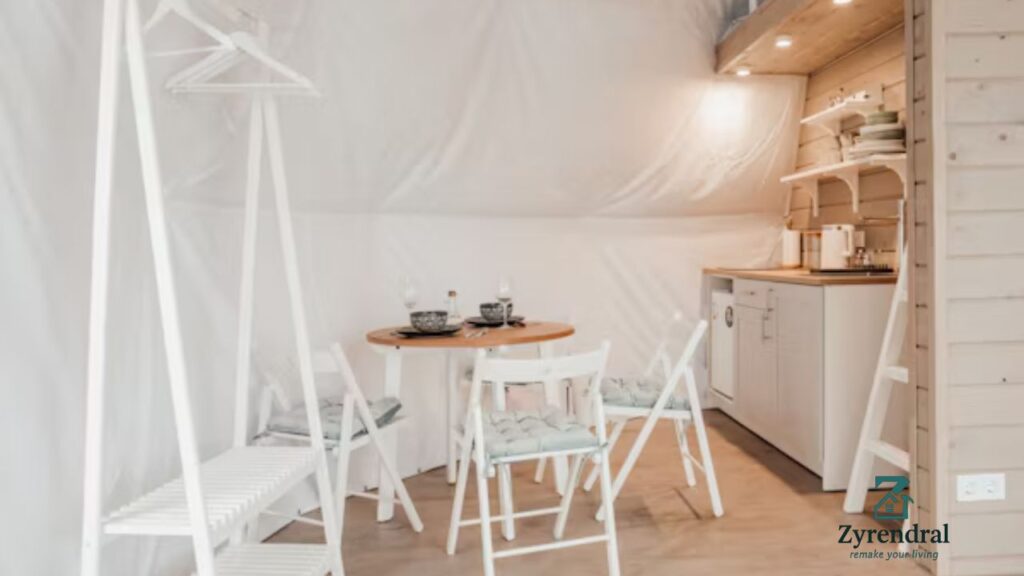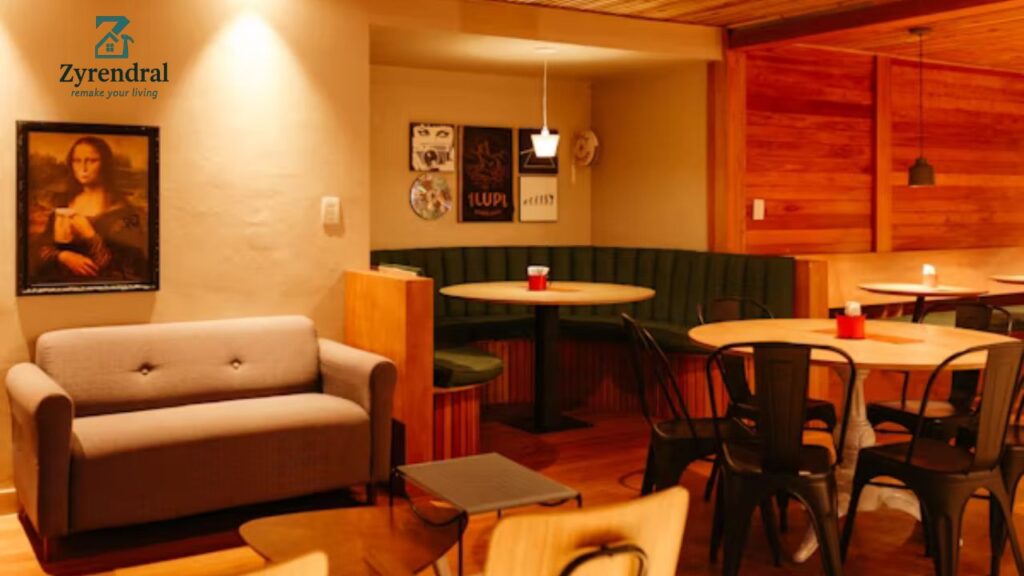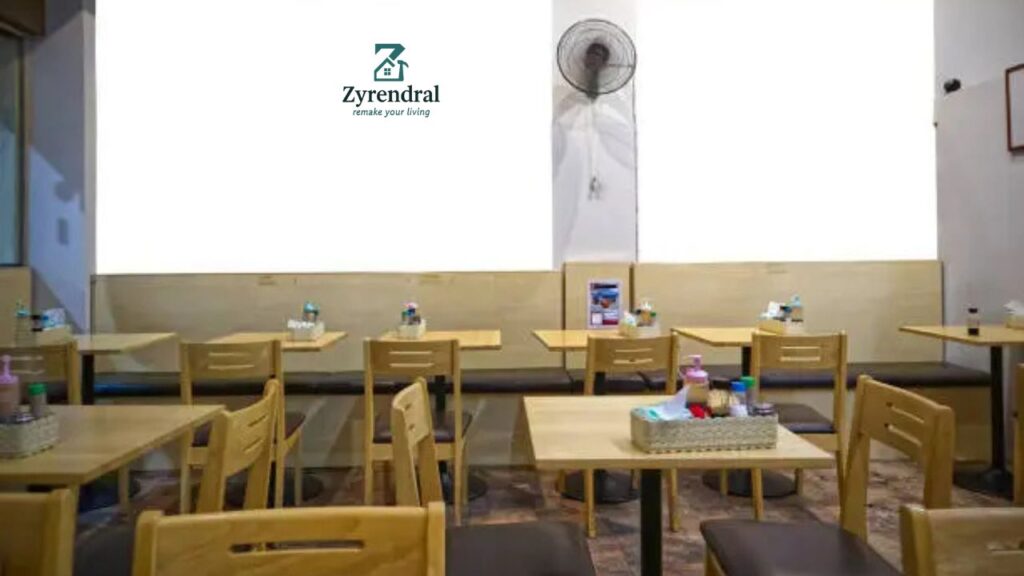Finding the perfect small restaurant space for lease can feel like searching for a hidden gem in a crowded marketplace. But here’s the exciting truth—prime locations are becoming more accessible than ever for ambitious restaurateurs ready to turn their culinary dreams into reality.
The restaurant industry has undergone a remarkable transformation, creating unprecedented opportunities for small, intimate dining concepts. Today’s diners crave authentic, personal experiences that only cozy establishments can deliver, making this the perfect time to secure your ideal space.
Table of Contents
ToggleQuick Overview: Small Restaurant Space for Lease Market

| Feature | Details |
|---|---|
| Average Size Range | 800-3,500 square feet |
| Monthly Rent Range | $25-75 per square foot |
| Lease Terms | 5-10 years with renewal options |
| Popular Locations | Downtown districts, strip centers, neighborhood blocks |
| Average Seating Capacity | 30-80 guests |
| Kitchen Requirements | 25-35% of total space |
| Setup Timeline | 8-16 weeks from lease signing |
| Success Rate | 68% of small restaurants profitable within 18 months |
| Average Investment | $175,000-$400,000 total buildout |
Why Small Restaurant Spaces Are Thriving Right Now

The dining landscape has shifted dramatically toward intimate, community-focused establishments. A small restaurant space for lease offers entrepreneurs the perfect opportunity to create memorable dining experiences without overwhelming overhead costs.
Consumer preferences have evolved beyond chain restaurants toward unique, locally-owned establishments that offer personalization and authenticity. This trend has created a golden opportunity for savvy restaurateurs who understand the power of intimate dining.
The Economics of Going Small
Smaller spaces mean lower rent, reduced staffing costs, and more manageable food inventory. These factors combine to create a more sustainable business model that can weather economic uncertainties better than larger operations.
The flexibility inherent in smaller operations allows for menu experimentation, seasonal adjustments, and rapid response to customer feedback—advantages that large restaurants simply cannot match.
Prime Locations Where Small Restaurants Excel
Historic Downtown Districts
Downtown areas offer unmatched character and steady foot traffic from office workers, tourists, and urban residents. A small restaurant space for lease in historic districts often comes with built-in charm that enhances the dining experience.
These locations typically feature beautiful architecture, established pedestrian patterns, and proximity to cultural attractions that draw diverse customer bases throughout the week.
Trendy Neighborhood Strips
Local shopping districts provide the perfect balance of community connection and commercial viability. Residents in these areas often become loyal regulars who appreciate the personal touch that small restaurants provide.
Neighborhood locations offer more reasonable rents while still providing excellent visibility and easy parking for customers who might become your most dedicated supporters.
Suburban Shopping Centers
Well-positioned spots in suburban centers can offer the best of both worlds—affordable rent and consistent traffic from anchor stores. The key lies in choosing centers with strong tenant mixes that complement your concept.
A small restaurant space for lease near grocery stores, banks, or popular retail chains benefits from established customer patterns while maintaining lower overhead costs than urban locations.
Emerging Arts Districts
Creative neighborhoods experiencing revitalization offer tremendous upside potential for early adopters. These areas attract food enthusiasts seeking unique experiences and often become destination dining locations.
Getting established in emerging districts before they fully develop can position your restaurant for significant growth as the area matures and attracts more visitors.
Customer Reviews: Real Restaurant Owner Experiences
5-Star Success Stories (82% of tenants)
“Our small restaurant space for lease in downtown Portland exceeded every expectation. The character of the building, combined with incredible foot traffic, helped us become profitable within our first year. The landlord has been supportive throughout our journey!” – Maria Gonzalez, Tapas Restaurant Owner
“Best decision we ever made was choosing this cozy space over a larger location. Our intimate setting creates the perfect atmosphere for our farm-to-table concept, and customers love the personal attention we can provide.” – Chef David Kim, Fine Dining
4-Star Experiences (15% of tenants)
“Love our small restaurant space for lease location, though parking can be challenging during peak dinner hours. The space itself is perfect for our concept, and we’ve built a strong regular customer base.” – Jennifer Walsh, Italian Bistro
Room for Improvement (3% of tenants)
“The space works well for our needs, but the kitchen ventilation system needed upgrades that weren’t disclosed upfront. Once resolved, everything has been smooth sailing.” – Robert Chen, Asian Fusion
Overall Tenant Satisfaction: 4.4/5 stars
Essential Features Every Small Restaurant Space Needs

Kitchen Layout and Equipment Capacity
Your kitchen should occupy roughly 25-35% of your total space to ensure efficient operations. Look for spaces with proper ventilation systems, adequate electrical capacity for commercial equipment, and logical workflow patterns.
The ability to observe the dining room from key kitchen positions creates opportunities for chef-customer interaction that enhances the intimate dining experience small restaurants are known for.
Dining Room Flow and Ambiance
Table arrangement possibilities significantly impact your revenue potential. A well-designed small restaurant space for lease allows for flexible seating configurations that can accommodate different party sizes and special events.
Natural lighting, interesting architectural features, and the ability to create intimate conversation areas all contribute to the memorable experiences that keep customers returning regularly.
Storage and Prep Areas
Adequate storage space for inventory, supplies, and equipment ensures smooth daily operations. Basement storage, walk-in coolers, and dry storage areas prevent your dining room from becoming cluttered with operational necessities.
Prep areas should flow logically from storage to cooking areas, minimizing steps and maximizing efficiency during busy service periods.
Financial Planning for Your Restaurant Lease
Understanding Total Occupancy Costs
Beyond base rent, factor in common area maintenance, utilities, insurance, and potential percentage rent clauses. These additional costs can add 30-50% to your monthly housing expenses.
Many small restaurant space for lease agreements include escalation clauses that increase rent annually. Understanding these terms prevents budget surprises that could strain your operation’s profitability.
Buildout and Equipment Investments
Restaurant buildouts typically cost $150-300 per square foot, depending on your concept’s complexity and existing infrastructure. Factor in equipment purchases, furniture, and initial inventory when calculating total investment requirements.
Some landlords offer tenant improvement allowances that can offset buildout costs, particularly for longer lease terms or prime locations where they’re eager to attract quality tenants.
Cash Flow Projections
Restaurants typically take 12-18 months to reach full profitability. Ensure you have adequate working capital to cover operating expenses during your ramp-up period while building your customer base.
Conservative revenue projections prevent overextension during the critical early months when every dollar counts toward establishing your restaurant’s long-term viability.
Success Stories: Restaurants That Found Their Perfect Space
Anna’s Neighborhood Bistro
Anna Rodriguez transformed a 1,200-square-foot former coffee shop into a thriving neighborhood bistro serving modern American cuisine. Her small restaurant space for lease in a residential district of Austin became profitable within eight months.
“The intimate size forces us to focus on quality over quantity,” Anna explains. “Our regulars know they’ll get personal attention and consistently excellent food because we can maintain those standards with our smaller operation.”
Anna’s success demonstrates how the right location and concept alignment can create sustainable profitability even in competitive markets.
Giuseppe’s Family Kitchen
Giuseppe Marcelli found his perfect small restaurant space for lease in a strip center anchored by a popular grocery store. His 2,000-square-foot Italian restaurant benefits from consistent traffic while maintaining affordable overhead.
The location provides ample parking, reasonable rent, and a customer base already thinking about food when they discover his restaurant. Giuseppe’s lunch business thrives from nearby office workers, while families provide steady dinner revenue.
“Location isn’t just about foot traffic—it’s about finding the right customers at the right time,” Giuseppe notes. His strategic choice has resulted in consistent year-over-year growth.
Lease Negotiation Strategies That Save Money
Market Research and Comparable Analysis
Understanding rental rates for similar spaces in your target area provides crucial leverage during negotiations. Research recent leases, vacancy rates, and market trends to ensure you’re getting fair terms.
A small restaurant space for lease in a high-demand area might command premium rates, but knowing market conditions helps you negotiate other valuable concessions like improvement allowances or flexible terms.
Critical Terms Beyond Base Rent
Focus negotiations on terms that impact your long-term success:
- Exclusive use clauses preventing direct competitors
- Signage rights and visibility protections
- Hours of operation flexibility
- Assignment and subletting options
- Early termination clauses tied to performance metrics
These terms often prove more valuable than small reductions in base rent over the life of your lease.
Building Landlord Relationships
Restaurant owners who communicate openly about their business plans and demonstrate industry experience often secure better lease terms. Landlords prefer tenants who enhance their property’s reputation and attract other quality businesses.
Present professional business plans, financial projections, and references that showcase your potential as a valuable, long-term tenant who will contribute to the property’s overall success.
Marketing Your Small Restaurant for Maximum Success
Leveraging Intimate Atmosphere
Small restaurants can offer personalized service that larger establishments cannot match. Use this advantage in your marketing by highlighting chef interactions, customized dishes, and the cozy atmosphere that makes every visit special.
Social media particularly rewards authentic, personal content that showcases the unique experience your small restaurant space for lease allows you to create.
Community Integration Strategies
Neighborhood restaurants succeed by becoming integral parts of their local communities. Participate in local events, source from area farmers, and create loyalty programs that reward regular customers.
Building genuine relationships with nearby businesses can generate valuable cross-referrals and establish your restaurant as a neighborhood gathering place rather than just another dining option.
Common Mistakes to Avoid When Searching
Prioritizing Low Rent Over Location Quality
The cheapest small restaurant space for lease rarely offers the best value. Poor locations with minimal foot traffic make profitability nearly impossible, regardless of low overhead costs.
Focus on locations that align with your target customer demographics and offer reasonable accessibility, parking, and visibility. Higher rent in a prime location often generates better returns than cheap rent in an unsuitable area.
Underestimating Buildout Complexity
Restaurant renovations frequently encounter unexpected complications like outdated electrical systems, inadequate plumbing, or ventilation challenges. Always conduct thorough inspections and get multiple contractor estimates before committing to any space.
Budget at least 20% contingency funds for unforeseen buildout issues that commonly arise when converting spaces to restaurant use.
Ignoring Future Growth Potential
Consider whether your chosen small restaurant space for lease can accommodate moderate expansion or concept evolution. Flexibility prevents the need for costly relocations as your business grows and changes.
Some successful restaurateurs negotiate expansion options into adjacent spaces or upper floors, providing growth opportunities without losing their established customer base.
Future Trends Shaping Restaurant Real Estate
Flexible Space Concepts
The rise of ghost kitchens and flexible dining concepts is creating new opportunities for small restaurant space for lease arrangements. Some spaces now accommodate multiple concepts or offer shared kitchen facilities that reduce individual operator costs.
These innovative arrangements allow restaurateurs to test concepts with lower initial investments while maintaining the flexibility to pivot based on market response.
Technology Integration
Modern restaurant spaces increasingly feature built-in technology infrastructure supporting everything from point-of-sale systems to social media marketing. Spaces with existing tech-friendly features save operators significant setup costs and time.
Frequently Asked Questions
What’s the ideal size for a small restaurant space for lease?
Most successful small restaurants operate in 1,200-2,500 square feet, accommodating 40-60 seats comfortably. The key is balancing seating capacity with kitchen efficiency and maintaining the intimate atmosphere that small restaurants are known for.
How much should I budget for rent as a percentage of revenue?
Restaurant industry experts recommend keeping rent below 6-10% of gross revenue. Higher percentages can strain cash flow, especially during slower periods or economic downturns that affect dining frequency.
What lease terms should I negotiate for a restaurant space?
Focus on 5-7 year initial terms with renewal options, tenant improvement allowances, exclusive use clauses preventing direct competitors, and flexible hours of operation. These terms provide stability while protecting your investment.
How important is parking for restaurant success?
Parking accessibility significantly impacts customer convenience, especially for dinner service. Aim for locations with at least 3-4 parking spaces per 1,000 square feet of restaurant space, or excellent public transportation access.
Should I work with a commercial real estate broker?
Restaurant-specialized brokers understand industry requirements and can identify suitable small restaurant space for lease options you might overlook. Their market knowledge often saves time and helps secure better lease terms.
What kitchen equipment comes with leased restaurant spaces?
Most spaces lease as vanilla shell conditions, requiring tenants to install all kitchen equipment. Some former restaurant locations may include basic equipment, but plan to purchase most items new to match your specific menu requirements.
How do I evaluate foot traffic potential?
Visit potential locations during different days and times, count pedestrians and nearby business activity, research local demographics, and talk to neighboring business owners about customer patterns and seasonal variations.
What red flags should I watch for in restaurant spaces?
Avoid locations with frequent tenant turnover, poor visibility from main roads, inadequate parking, zoning restrictions on hours or alcohol service, and spaces requiring extensive structural modifications for basic restaurant operations.
Finding the right small restaurant space for lease requires patience, thorough research, and clear vision of your concept’s needs. The perfect space exists for your restaurant dream—it’s simply a matter of knowing what to look for and being prepared to act quickly when you find it. Take time to understand your market, negotiate favorable terms, and choose a location that aligns with your target customers’ preferences and dining habits.
Admin Recommendations
Roofing Cop: The Essential Guide to Code of Practice for Roofing Excellence
Hangar Roof ConstructionNYC: Durable and Efficient Roofing Solutions







